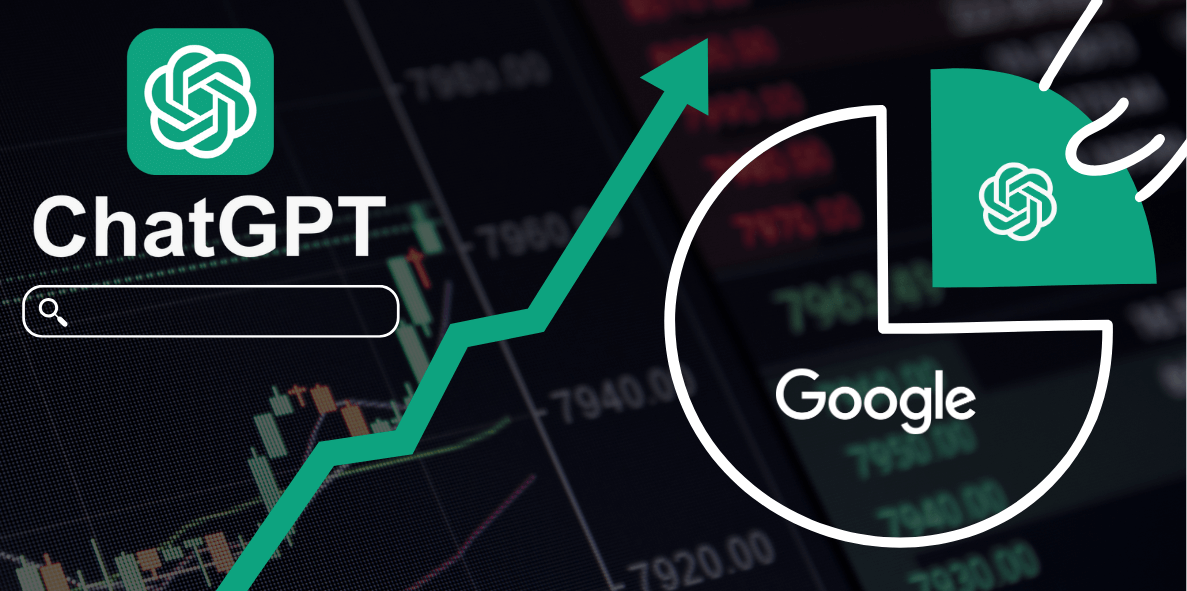
AI-driven search tools such as ChatGPT, Perplexity, and other language models (LLMs) are transforming the way users access content online. A recent study conducted by Previsible underscores this shift, revealing exponential growth in traffic referrals from AI tools and notable changes in search behavior. These findings shed light on how businesses, particularly in the finance sector, can adapt their strategies to leverage these new traffic sources effectively.
The study analyzed data from over 30 websites and found that language models are beginning to rival traditional search engines in driving traffic. Notably, Perplexity and ChatGPT account for 37% of all LLM referral traffic, with competitors like CoPilot and Gemini following closely behind at 12-14% each.
David Bell, co-founder of Previsible, sees this as a sign of changing times:
“Google’s growth has plateaued and is now experiencing a decline in dominance. This shift is driven by the adoption of tools like ChatGPT, Claude, CoPilot, Bing, and others, which offer more efficient ways to satisfy user intent.”
The finance sector has emerged as the primary beneficiary of LLM-driven traffic, accounting for an overwhelming 84% of all referrals analyzed. Bell attributes this to partnerships and integrations between finance platforms and LLMs like Perplexity, enabling seamless access for users. This trend highlights the growing role of AI in delivering highly specialized, sector-specific content.
When it comes to the type of content that benefits most from LLM-driven traffic, blog posts dominate, receiving 77.35% of all LLM referrals. Other content types trail significantly:
Homepage visits: 9.04%
News articles: 8.23%
Guides: 2.35%
This pattern underscores the continued importance of informational content in attracting traffic via AI search tools. However, product pages rarely surface in LLM results, signaling a need for e-commerce businesses to rethink their strategies.
David Bell notes:
“Informational content is still highly relevant in the era of AI-driven search. However, businesses should prioritize optimizing conversion rates and the user journey, given that product pages are not prominently featured in AI search results.”
Although LLM-driven traffic currently accounts for just 0.25% of total website traffic in impacted sectors, the growth trajectory is remarkable. Over the last 90 days, the study recorded:
900% growth in ChatGPT referrals for the events industry
400%+ growth in ChatGPT traffic for e-commerce and finance sectors
Consistent growth across all LLMs, with the exception of CoPilot
If these trends continue, LLM-driven traffic could grow to represent up to 20% of total website traffic within the next year. Bell emphasizes the importance of monitoring this trend:
“With an average growth rate of 200% every 90 days, businesses should prepare for AI-driven traffic to become a significant component of their overall web strategy.”

To help businesses adapt to this new reality, Previsible has launched a free Looker Studio dashboard that tracks LLM referral traffic. The dashboard provides insights into:
Organic vs. LLM Sessions: Breakdown of total sessions and LLM-specific traffic
Traffic Trends: Line graphs showing LLM referral growth over time
Landing Page Performance: Identification of top landing pages for LLM traffic, along with session metrics and user engagement data
Session Comparisons: Analysis of time spent on pages by LLM users versus site averages
By leveraging this tool, businesses can:
Assess the impact of LLMs on overall traffic
Identify which LLMs are driving the most traffic
Track growth trends and adjust content strategies accordingly
Optimize high-performing landing pages to enhance user engagement and conversions
Finance websites have seen the strongest growth in LLM-driven traffic, highlighting the value of high-quality, informational content. Blogs, guides, and articles should remain a key focus for sectors aiming to capitalize on AI-driven referrals.
For e-commerce businesses, the lack of product pages in LLM results presents both a challenge and an opportunity. Shifting focus to conversion rate optimization (CRO) and enhancing the user journey can help bridge the gap.
With LLM traffic projected to grow exponentially, businesses should integrate AI traffic analysis into their overall digital strategies. This includes regularly updating content, improving landing pages, and monitoring user engagement metrics.
Finance leads the way: Blog content in the finance sector is driving the majority of LLM referrals, showcasing the power of specialized, informational content.
Rethink e-commerce strategies: Product pages rarely appear in AI search results, signaling the need for a shift in focus to CRO and user experience.
Exponential growth potential: LLM-driven traffic, though currently a small fraction of overall website visits, could reach 20% of total traffic within a year if growth trends hold.
AI-driven traffic from language models is still in its early stages but growing rapidly. Businesses should stay ahead of the curve by adapting their content strategies, tracking LLM-driven traffic, and optimizing their websites for both engagement and conversions. As the landscape evolves, maintaining a balanced approach between AI-driven and organic traffic will be critical for long-term success.
As Founders of this dynamic company, we embarked on a journey driven by our shared passion for innovation and technology. Our vision for #Hash Tronics was born from a desire to create impactful solutions.
As Founders of this dynamic company, we embarked on a journey driven by our shared passion for innovation and technology. Our vision for #Hash Tronics was born from a desire to create impactful solutions.
As Founders of this dynamic company, we embarked on a journey driven by our shared passion for innovation and technology. Our vision for #Hash Tronics was born from a desire to create impactful solutions.
Phone:
U.K Office Number:
Email:
WhatsApp us

